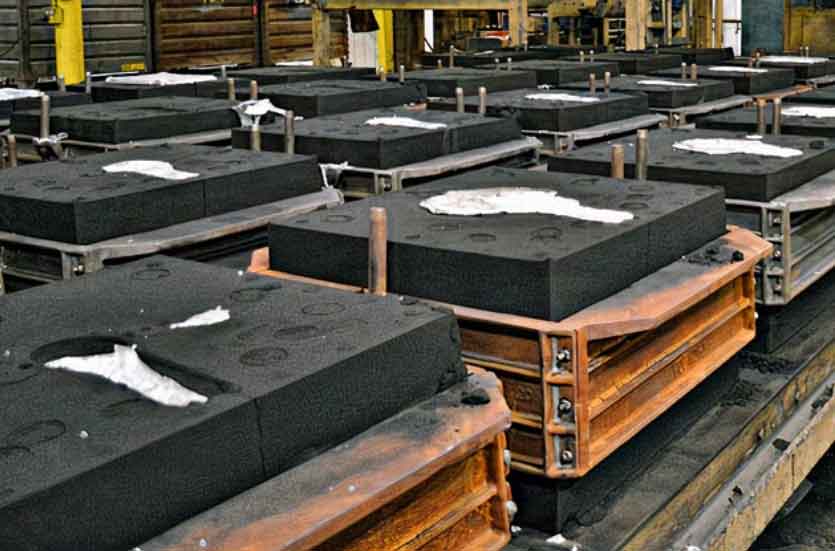From sand to solid, resin sand casting is indeed a fascinating process that transforms ordinary sand into complex, solid metal parts. Let’s delve deeper into the various stages of this captivating world of metal casting:

1. Pattern Making:
The journey begins with the creation of a pattern, which serves as a replica of the final metal part. Skilled artisans or engineers craft patterns using materials like wood, plastic, or metal, ensuring they accurately represent the desired shape and dimensions of the casting.
2. Mold Preparation:
Resin sand casting utilizes a two-part mold consisting of the “drag” (lower part) and the “cope” (upper part). The pattern is placed inside the drag, and special sand, coated with resin, is carefully packed around it. The resin binder provides the sand with the necessary strength and cohesion to withstand the molten metal.
3. Resin Coating:
To create a strong and stable mold, sand grains are coated with a resin binder. The resin can be a phenolic urethane or furan resin, depending on the specific requirements of the casting. The coated sand is applied in layers and compacted to achieve the desired density.
4. Curing:
After the mold is fully packed and compacted, it undergoes a curing process. Curing involves allowing the resin to harden and bond with the sand particles, creating a robust and solid mold. This step is crucial as it ensures the mold retains its shape during the subsequent metal pouring and solidification stages.
5. Mold Assembly:
With the drag fully cured, the cope is placed on top, and the two halves are securely fastened together. The combination of the drag and cope creates a cavity that matches the shape of the desired metal part.
6. Pouring:
The next exciting phase is the pouring of molten metal into the prepared mold. The molten metal, typically aluminum, iron, or steel, is carefully introduced into the mold through a gating system. The gating system controls the flow of the metal and helps to minimize potential defects in the casting.
7. Cooling and Solidification:
As the molten metal fills the mold, it starts to cool and solidify into the shape of the pattern and the mold cavity. The cooling time is carefully managed to ensure that the metal solidifies uniformly without the formation of defects such as shrinkage or porosity.
8. Mold Removal and Finishing:
Once the metal has completely solidified, the mold is opened, and the casting is carefully removed. The casting may require additional finishing processes, such as removing excess material, grinding, machining, or surface treatments, to achieve the final desired specifications.
9. Inspection and Quality Control:
Before the casting is deemed ready for use, it undergoes thorough inspection and quality control measures. This ensures that it meets the required dimensional accuracy, surface finish, and mechanical properties as per the design specifications.
Resin sand casting is an intriguing process that combines skilled craftsmanship, innovative materials, and precision engineering to bring imagination into reality. Its ability to produce intricate, strong, and high-quality metal parts has made it a popular choice in various industries, including automotive, aerospace, and machinery manufacturing. As technology and materials continue to advance, resin sand casting continues to play a significant role in the world of modern manufacturing.
